#pectoral
Photo

A little tutorial about how to draw pecs!
Many asked me in the past so I hope it can help many!
32K notes
·
View notes
Text

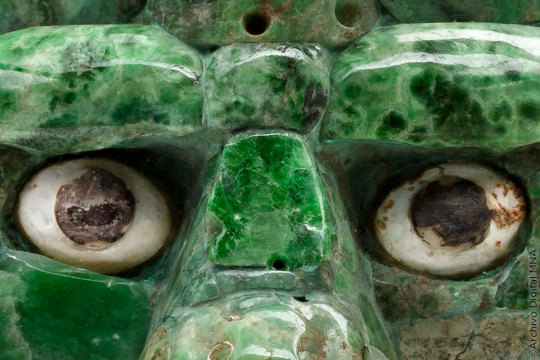
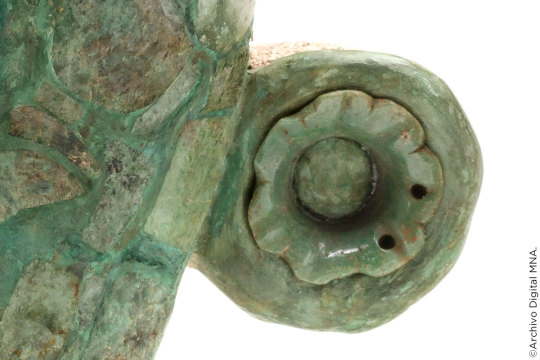


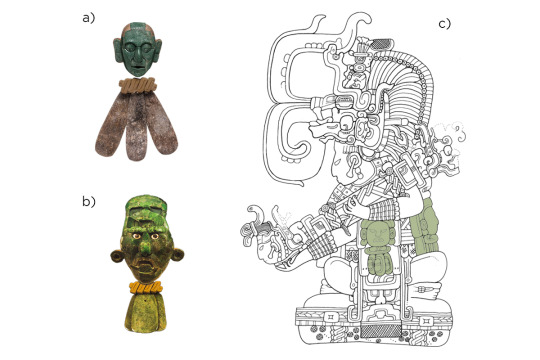
~ The royal belt of Calakmulhul.
▪︎ Towards mid-November 1988, researchers from the Calakmul Project discovered in Building III a crypt that housed the remains of an ancient sovereign accompanied by a modest funerary trousseau. Among the objects deposited in the tomb were three green stone masks. One must have been placed on his face, the other two smaller ones were interpreted as medallions or pectorals.
The belt was part of the dignitaries' attire, as can be seen in some steles. It was made up of a small mask from which three green stone axes hung. The masks represented deities or embodied ancestors. The axes, when hitting each other, generate a tinkling sound that is heard like the murmur of the wind. By wearing the belt, the rulers were transfigured into the axis mundi , in the center of the Universe.
#history#museum#archeology#archaeology#the royal belt of calakmul#calakmul#masks#ancient#ancient art#ancient history#pectoral#axis mundis#mexican#mexico#Mesoamerica#pre columbian
1K notes
·
View notes
Photo
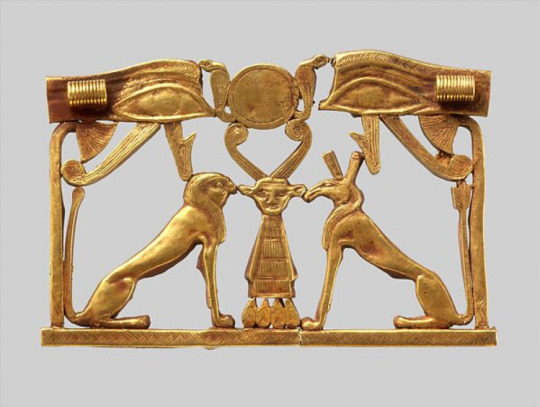
A Middle Kingdom pectoral with Horus and Set as sphinxes. Formerly displayed at the Met.
493 notes
·
View notes
Text

Winged Scarab Pendant of Tutankhamun
This winged scarab pendant of cloisonné technique is inlaid with semiprecious stones and colored glass. The central element of the pendant is a scarab of Libyan desert glass, grasping on one side a lotus and on the other a papyrus flower, flanked by two uraei, or rearing cobras.
A gold frame outlines the main composition and supports pendants of lotus flowers, papyrus, and poppy seed heads. A slim solar boat rests upon the front feet of the scarab and carries the wadjet or Eye of Horus. It is flanked by two uraei or rearing cobras.
The wadjet eye is surmounted by a lunar crescent of gold and a silver disk with images of the gods. Thoth and Ra-Horakhty can be seen crowning the central figure of king Tutankhamun.
From the Tomb of Tutankhamun (KV62), Valley of the Kings, West Thebes. Now in the Egyptian Museum, Cairo. JE 61884
Read more
201 notes
·
View notes
Text

Pectoral
Egyptian, 13th century BCE (New Kingdom, Dynasty 19)
The shrine-shaped pectoral has a cavetto cornice at the upper edge. The front displays the kneeling goddesses Isis and Nepthys in the solar barque, each with one arm raised in a gesture of adoration. In the center was once an inscribed scarab, which is now lost. A winged sun-disk above the boat completes the scene. The back exhibits two enthroned gods--falcon-headed Horus and jackal-headed Anubis--supporting the now-missing scarab.
26 notes
·
View notes
Text

#brazilian#hot#sexy#man#men#chico#boy#boys#chicos#guapo#handsome#cute#pretty#pecs#pectorales#pectoral#abdomen#abdominales#skate#buenorro#tío bueno#muscle
66 notes
·
View notes
Text

Pectoral (gold, glass, and turquoise) of Ramesses II (r. 1279-1213 BCE), depicting his cartouche with the vulture-goddess Nekhbet and the cobra-goddess Wadjet. Now in the Louvre.
#art#art history#ancient art#Egypt#Ancient Egypt#Egyptian art#Ancient Egyptian art#Egyptian religion#Ancient Egyptian religion#Ramesses II#Ramesside#19th Dynasty#New Kingdom#pectoral#amulet#metalwork#gold#goldwork#Louvre#Louvre Museum#Musee du Louvre
279 notes
·
View notes
Text



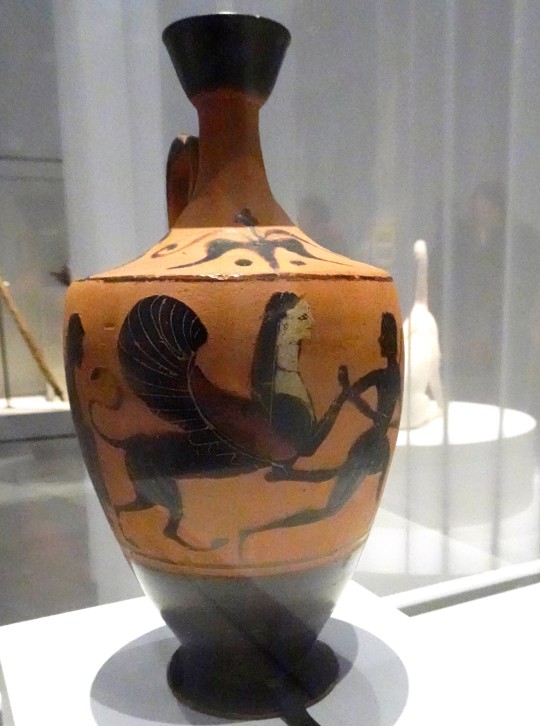
Il y a une petite quinzaine, je suis allé avec Julien et Katie, au Louvre-Lens pour une expo temporaire : “Animaux Fantastiques”. Une très belle expo ! Ici des sphinx (et des sphinges)
plaques de meubles en ivoire: à gauche, sphinx - Syrie maritime, 1500-110 av. J-C. ; à droite, sphinx - palais d'Arslan Tash, Syrie, 700 av. J-C.
orthostate (pierre de soubassement de temple), sphinge ailée - Guzana, Syrie, 900 av. J-C.
pectoral en or, avec sphinx - Enkomi, Chypre, 1200-1000 av. J-C.
lécythe, sphinge poursuivant un jeune homme - Athènes, 550 av. J-C.
#expo#louvre-lens#animaux fantastiques#créature#monstre#shinx#sphinge#syrie#ivoire#arslan tash#orthostate#guzana#pectoral#or#enkomi#chypre#lécythe#grèce antique#athènes
9 notes
·
View notes
Photo

Portrait en buste — rotring, carnet nº 33, 1989
25 notes
·
View notes
Text

Pectoral of Tutankhamun
33 notes
·
View notes
Text


~ Pectoral ornament with human profiles and pendant discs.
Cultures: Minoan
Date: 1850-1550B.C.
Place of origin: Attica, Greece, Aegina
Medium: Gold
#ancient#ancient art#history#museum#archeology#ancient sculpture#ancient history#archaeology#ancient jewelry#pectoral#minoan#crete#greek#ancient greece#Aegina#gold#Attica#1859 b.c.#1550 b.c.
1K notes
·
View notes
Text

Torso of a living man
9 notes
·
View notes
Text

Inlaid pectoral of Tutankhamun, a winged scarab with goddesses Isis and Nephthys
New Kingdom, 18th Dynasty, ca. 1332-1323 BC.
Tomb of Tutankhamun (KV62), Valley of the Kings, Thebes.
Now in the Egyptian Museum, Cairo. JE 61948
Photo: Kenneth Garrett
Read more
39 notes
·
View notes
Text


Pectoral with Scarab
Egyptian, ca. 1295-1069 BCE (New Kingdom, Dynasty 19-20)
The scarab-pectoral is a funerary amulet, which was originally attached to mummy wrappings. The amulet should assure the renewal of the deceased in the afterlife similar to that of the god Osiris, which is why the inscription, which names the seated god, is the same as the inscription, which identifies the worshipping deceased. The combination of sun-oval and dd-pillar of Osiris represents the unification of both deities, and of the cyclical and the linear aspects of time and eternity; the result is the renewal of both deities, of this and the other world, as well as the deceased. While the reverse of the pectoral focuses on the unification process, the front represents the renewal (scarab with baboons in the barque) and rising of the sun (winged sun disc). The amulet should guarantee the meeting of the deceased with the sun god and his consequential renewal.
It is striking that on both sides the scarab is lopsided; it seems to be unlikely that this was just a mistake of a less qualified artist. Most probably the lopsided placement has to do with the idea of the "sloping celestial path," which can be expressed by a lopsided sky hieroglyph. The motif of the scarab in the barque flanked by solar baboons is rare on private pectorals of the New Kingdom, and more popular on scarabs, or finger rings see.
26 notes
·
View notes
Text
Rodi mamao y peluo

Gracias @demyx_anthony por el Skecht
#Oc#fursona#monkey#pectoral#chichon#sonic#furry#oc#furryart#sonic the hedgehog#fan art#furryfandom#rodi#fanart#male furry#furry fat
2 notes
·
View notes
Photo

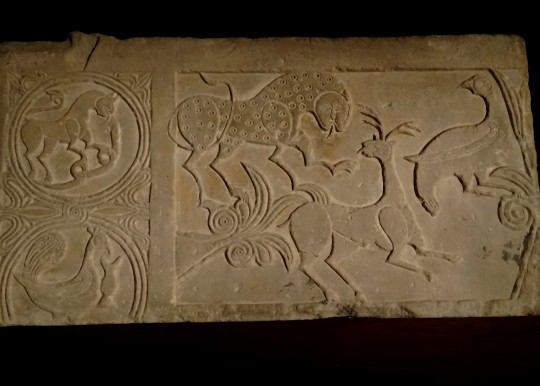




Je reviens à mon projet de présenter la plupart de mes 55000 photos (nouveau compte approximatif. On se rapproche du présent !).
2016. Une petite virée à Bruxelles avec Julien. C’était surtout pour visiter une expo sur l’Anatolie au Palais des Beaux-Arts:
- bas-relief seldjoukide - Konya, XIIIe s.
- bas-relief seldjoukide, avec l’Arbre de Vie - Konya, XIIIe s
- balustrade méso-byzantine avec l’Arbre de Vie et des griffons
- Mir'at ül-Kevneyn, carte ottomane de l'univers
- carreau seldjoukide - Beyşehir
- pectoral ourartéen, Arbre de Vie entre 2 lions - VIIe s. av.J-C
#souvenirs#belgique#bruxelles#palais des beaux-arts#archéologie#arbre de vie#monstre#griffon#seldjoukide#konya#byzantin#byzance#mir'at ül-kevneyn#ottoman#carte#atlas#beysehir#pectoral#ourartéen#urartu#ourartou#lion#soleil#anatolie#turquie
15 notes
·
View notes